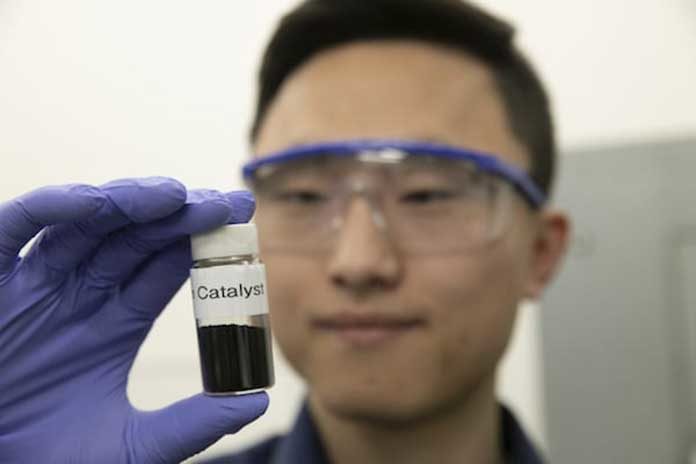Haotian Wang, Assistant professor at Rice University has an efficient plan to convert the greenhouse gas into useful products in a greenway. Along with his colleagues, he has developed small reactors that enable single molecules of nickel to catalyze industrial greenhouse gases into carbon monoxide, an industrial feedstock.
The new system is cheaper and relies on high concentrations of carbon dioxide gas and water vapor to operate more efficiently – just one 10-by-10-centimeter cell. Moreover, it can produce as much as four liters of carbon monoxide per hour.
Wang said, “The most promising idea may be to connect these devices with coal-fired power plants or other industry that produces a lot of carbon dioxide. About 20 percent of those gases are carbon dioxide, so if you can pump them into this cell … and combine it with clean electricity, then we can potentially produce useful chemicals out of these wastes in a sustainable way, and even close part of that carbon dioxide cycle.”
“In that earlier work, we had discovered the single nickel-atom catalysts which are very selective for reducing carbon dioxide to carbon monoxide … but one of the challenges we faced was that the materials were expensive to synthesize. The support we were using to anchor single nickel atoms was based on graphene, which made it very difficult to scale up if you wanted to produce it at the gram or even kilogram scale for practical use in the future.”
“To address that problem, his team turned to a commercial product that’s thousands of times cheaper than graphene as an alternative support – carbon black.”
Scientists used a similar process of electrostatic attraction to assimilate single nickel particles (positive charged) into defects (negative charged) in carbon black nanoparticles, with the subsequent material being both minimal effort and exceedingly particular for carbon dioxide decrease.
Wang said, “Going forward, the system still has challenges to overcome, particularly related to stability.”
“If you want to use this to make an economic or environmental impact, it needs to have a continuous operation of thousands of hours. Right now, we can do this for tens of hours, so there’s still a big gap, but I believe those problems can be addressed with more detailed analysis of both the carbon dioxide reduction catalyst and the water oxidation catalyst.”
“Ultimately, the day may come when the industry will be able to capture the carbon dioxide that is now released into the atmosphere and transform it into useful products.”
“Carbon monoxide is not a particularly high-value chemical product. To explore more possibilities, my group has also developed several copper-based catalysts that can further reduce carbon dioxide into products that are much more valuable.”
The system is described in a paper in Joule, a Cell Press journal.
